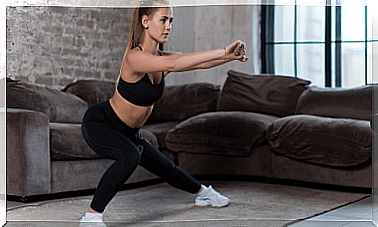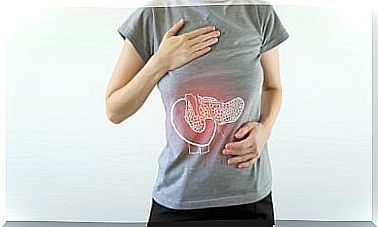4 Reasons Why You Shouldn’t Stop Dancing
Beyond the benefits it brings in the physical plane, dancing can also be very suitable to take care of memory, and even to promote different hormonal connections . Learn why it is such a recommended activity.
Dancing is one of those activities that makes us feel completely alive. Who has not experienced the immense joy that a good step transmits on a dance floor or in a dance class? And even at home or in the bathroom!
It does not matter if this exercise is done completely alone or with company. Dancing is a true synonym of fun and harmony between the body and the place where we are going to dance. In addition, as we will explain below, it is extremely beneficial for health.
The dance reaches every corner
The dance represents the human being in all its splendor, from young to old. It reaches all corners of the world, with the peculiarities and characteristics that distinguish each one from other places.
This method of corporal expression is considered as a cultural and social activity rooted in the human being since time immemorial. In fact, the first settlers of the world relied on dance to perform various rituals.
Dance has evolved through history to become what it is now. However, thanks to globalization and other types of events, all its variables can be practiced according to the tastes of each person.
Why should we not stop dancing?
The fun of dancing is practicing it, experiencing it firsthand. However, it is worth knowing why we do it, beyond the fun and joy it produces, and what positive consequences it entails for the body.
1. The heart is strengthened
One of the most recommended physical activities by medical professionals is dancing. Making physical efforts is extremely important for the well-being of the body, due to the increase in heart rate.
Over time, the various systems of the body begin to lose efficiency and functionality; This occurs, for example, with the cardiovascular system. However, according to a study published in the Journal of Aging and Physical Activity , dancing contributes to reducing the risk of heart disease, among many other benefits.
According to the specialists of the World Health Organization, to obtain health benefits with physical exercise —such as dancing—, 30 minutes three times a week are enough, although it is recommended that it be five. In this case, it all depends on how intense the activity is.

Performing this exercise on a regular basis contributes to the prevention of coronary and peripheral diseases. Moreover, it also helps to strengthen the arteries and veins. In addition, by improving the state of this system, oxygenation of the body in general is greatly enhanced.
A publication of the Spanish Heart Foundation explains that the cardiorespiratory component is the most important factor in determining the physical form of a person. In addition, to this are added others such as aerobic capacity, muscular strength and endurance, flexibility and body composition.
2. Improve memory
Memory problems begin to become visible over time, and also due to bad habits. Therefore, activities should be implemented to prevent these harmful effects. One of them is physical exercise, and dancing appears among the alternatives.
Not only for the increased oxygenation, but for the fun it offers, dancing is a good way to protect brain health. According to research published by Frontiers in Aging Neuroscience , dancing helps improve certain areas of the brain related to spatial memory, important for learning choreographies, for example.

3. Dancing counteracts stress
To clear up any doubts, just observe the attitude and the face of those people who practice it regularly. The music present in each dance invites the human being to move.
In addition, each movement is responsible for stimulating hormonal function, specifically endorphins and serotonin, which promote happiness. This is an effect relative to physical exercise in general, according to a study published in Sports Medicine .
Endorphins and serotonin are related to a person’s emotions — anxiety, restlessness, and anger, among others — as well as their mood. Serotonin levels decrease with stress, and that is why it is important to enhance its synthesis through exercise.
4. Helps physical abilities
Physical capacities are an important pillar in human development, and they are decisive from birth. The problem is that some of them begin to be lost with aging.

What are these capabilities? According to a publication of the Body, Culture and Movement Research Journal , we can differentiate between two types of physical capacities.
The first group is made up of the conditional capacities: strength, speed, endurance, flexibility; and the other, by the coordinative ones: rhythm, adaptation, balance, orientation, synchronization, reaction, differentiation.
According to research published in the Journal of Aging and Physical Activity , dancing regularly promotes all of these abilities during older adulthood, but especially balance, strength, orientation, and flexibility. These positive consequences for the body could also be replicated in other stages of life.
Dancing is always a favorable choice for health
With all of the above, it is clear that dancing is a type of physical activity that has a very positive impact on the quality of life and the prevention of future diseases. In addition, another of its advantages is that there are many styles and they are suitable for all types of people.
Everything will depend, of course, on the type of dance practiced. The best thing is that you try them all and choose which one you like the most and with which you find more benefits.









